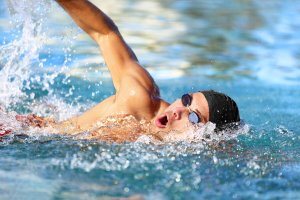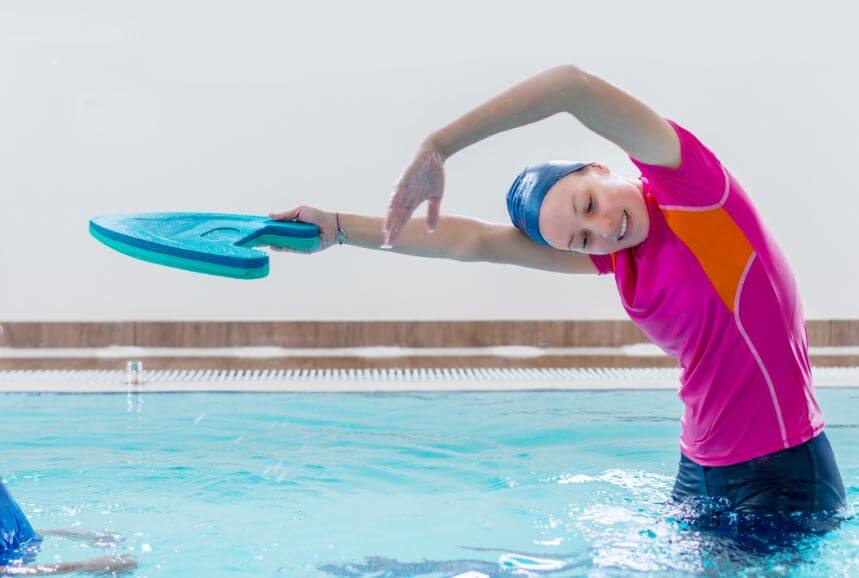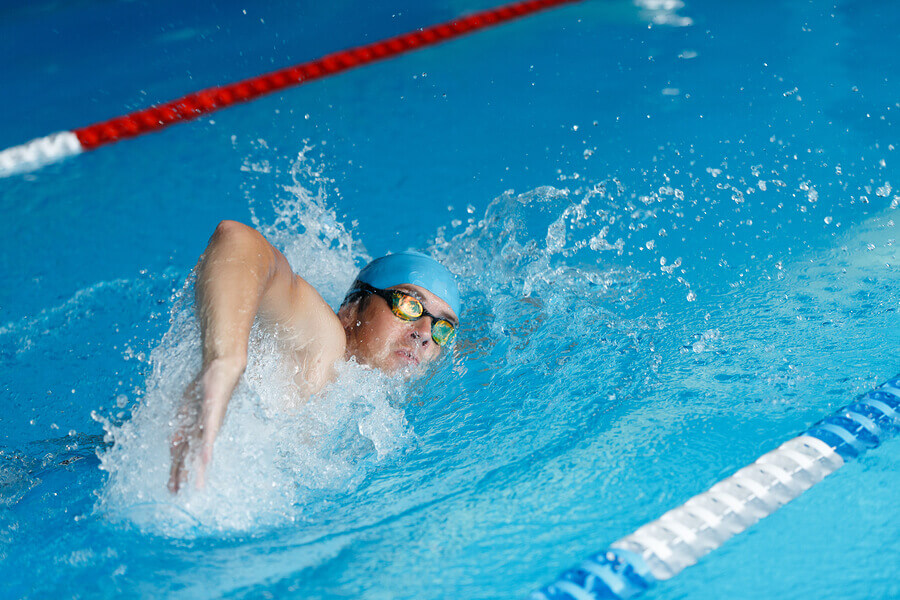Tips to Increase Resistance While Swimming

Many athletes aim to improve their resistance while swimming. After getting into this exciting sport discipline, athletes often try to improve their technique in order to swim faster and longer. In order to achieve this goal, it’s important to follow a series of guidelines that we’ll discuss in the following article.
Tips to increase swimming resistance
Resistance can help swimmers to be more efficient. The result of good resistance training will be greater speed and endurance when facing longer distances.
The following are a few tips to improve your resistance while swimming:
- Get in touch with a qualified professional: when starting off, it’s best to invest in swimming lessons. Swimming lessons are a great way to improve technique. Having a professional on hand will help you detect your mistakes and improve your technique.
- Learn to master your breathing: finding the right breathing pattern is essential to improving resistance. This will allow you to keep a steady pace over longer distances.
- Improve your physical condition: if you manage to improve your general physical condition, this will result in better stamina while swimming. It’s important to set goals that are motivating and attainable.
- Strengthening the upper and lower body: in order to improve stamina, you’ll have to work out both your arms and legs.
- Try using auxiliary tools: tools such as a float can help improve technique.

- Avoid the Valsalva reflex: it’s an innate reflex that closes the upper respiratory tract while a person exerts effort. In order to prevent it, try to relax as much as possible while swimming.
- When it comes to improving technique, it’s important to emphasize sliding through the water. Try to increase your slide instead of making more strokes. Having an efficient slide will help you to increase resistance.
- Try out series training: this is one of the most effective methods to increase resistance. For example, train by swimming a series of 100 to 300 meters. Try different styles and remember to rest between laps. Pay attention to distance traveled rather than speed.
Training sessions to improve resistance
As with any training program, in order to improve your resistance, you’ll have to make a plan. Your plan should be made by a professional and it should be based on your individual needs and characteristics. The following is an example of training sessions to improve resistance:
- Warm-up: perform three 100 meter laps at a medium pace. Take a 15-second break between each lap. Your speed should be approximately 50-60 percent of your capacity. Try to have your technique as perfect as possible.
- Swimming technique: perform 8 to 25-meter laps. Swim at 50-60 percent of your maximum capacity and rest for 15 seconds between each lap.

- Main aspect: focus on breathing every 3 strokes. Make sure you make use of your legs. Rest for 15 seconds between sets and try to carry out a faster pace than during your warm-up laps (60-70 percent). Complete 3 series of 50 meters, 3 series of 75 meters, 3 series of 100 meters and finally 3 series of 150 meters.
- Cooldown: don’t neglect the cool-down phase. This will help your recovery be as efficient as possible. A good option is to swim gently for a few minutes after your session.
As you can see, it’s possible to increase your resistance while swimming if you plan in the right exercise and if you follow the advice mentioned above. With effort and perseverance, you’ll be able to see the progress you’re looking for!
Many athletes aim to improve their resistance while swimming. After getting into this exciting sport discipline, athletes often try to improve their technique in order to swim faster and longer. In order to achieve this goal, it’s important to follow a series of guidelines that we’ll discuss in the following article.
Tips to increase swimming resistance
Resistance can help swimmers to be more efficient. The result of good resistance training will be greater speed and endurance when facing longer distances.
The following are a few tips to improve your resistance while swimming:
- Get in touch with a qualified professional: when starting off, it’s best to invest in swimming lessons. Swimming lessons are a great way to improve technique. Having a professional on hand will help you detect your mistakes and improve your technique.
- Learn to master your breathing: finding the right breathing pattern is essential to improving resistance. This will allow you to keep a steady pace over longer distances.
- Improve your physical condition: if you manage to improve your general physical condition, this will result in better stamina while swimming. It’s important to set goals that are motivating and attainable.
- Strengthening the upper and lower body: in order to improve stamina, you’ll have to work out both your arms and legs.
- Try using auxiliary tools: tools such as a float can help improve technique.

- Avoid the Valsalva reflex: it’s an innate reflex that closes the upper respiratory tract while a person exerts effort. In order to prevent it, try to relax as much as possible while swimming.
- When it comes to improving technique, it’s important to emphasize sliding through the water. Try to increase your slide instead of making more strokes. Having an efficient slide will help you to increase resistance.
- Try out series training: this is one of the most effective methods to increase resistance. For example, train by swimming a series of 100 to 300 meters. Try different styles and remember to rest between laps. Pay attention to distance traveled rather than speed.
Training sessions to improve resistance
As with any training program, in order to improve your resistance, you’ll have to make a plan. Your plan should be made by a professional and it should be based on your individual needs and characteristics. The following is an example of training sessions to improve resistance:
- Warm-up: perform three 100 meter laps at a medium pace. Take a 15-second break between each lap. Your speed should be approximately 50-60 percent of your capacity. Try to have your technique as perfect as possible.
- Swimming technique: perform 8 to 25-meter laps. Swim at 50-60 percent of your maximum capacity and rest for 15 seconds between each lap.

- Main aspect: focus on breathing every 3 strokes. Make sure you make use of your legs. Rest for 15 seconds between sets and try to carry out a faster pace than during your warm-up laps (60-70 percent). Complete 3 series of 50 meters, 3 series of 75 meters, 3 series of 100 meters and finally 3 series of 150 meters.
- Cooldown: don’t neglect the cool-down phase. This will help your recovery be as efficient as possible. A good option is to swim gently for a few minutes after your session.
As you can see, it’s possible to increase your resistance while swimming if you plan in the right exercise and if you follow the advice mentioned above. With effort and perseverance, you’ll be able to see the progress you’re looking for!
All cited sources were thoroughly reviewed by our team to ensure their quality, reliability, currency, and validity. The bibliography of this article was considered reliable and of academic or scientific accuracy.
- Girold, S. et al. (2007). Effects of dry-land vs. Resisted- and assisted-sprint exercises on swimming sprint performances. Journal of Strehngth and Conditioning Research, 21, 599-605.
- Van Handel, P. J. et al. (1988). Aerobic economy and competitive performance of U.S. Elite Swimmers. Human Kinetics, 219-227.
This text is provided for informational purposes only and does not replace consultation with a professional. If in doubt, consult your specialist.








